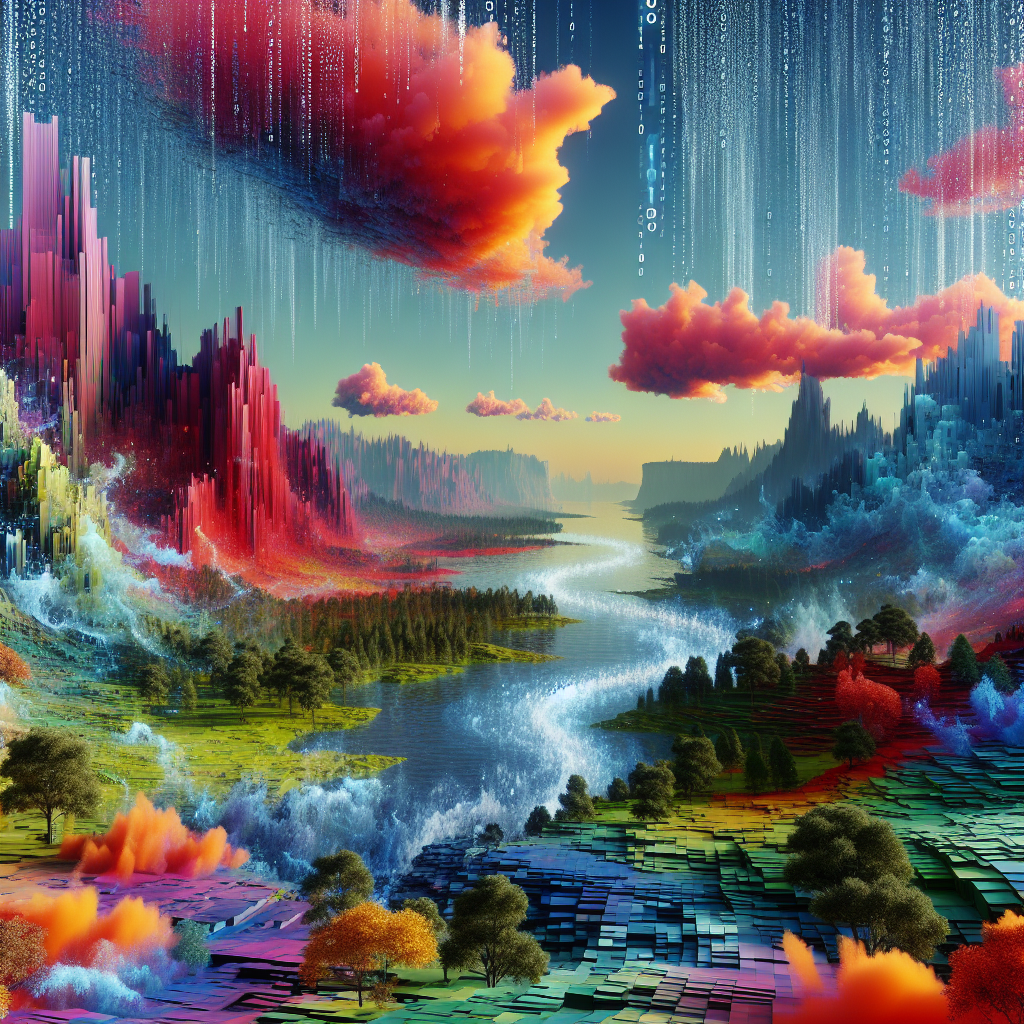Unveiling the Realism: The Evolution of AI-Generated Imagery
Artificial intelligence has reached a new zenith of creativity, rendering images that blur the lines between reality and artificiality. The latest innovations in AI image generation tools, particularly the likes of Stable Diffusion and Flux, have reshaped our understanding of visual content. In this article, we’ll dive deep into the mechanics behind these advancements, the technology’s implications for creators and consumers, and the thrilling future that lies ahead.
The Magic of Flux and Stable Diffusion
At the heart of this creative renaissance is Stable Diffusion 3, a model that has captivated professionals and enthusiasts alike by producing jaw-dropping images that are often indistinguishable from real photographs. The allure lies in its uncanny ability to mimic the nuances of reality—everything from the subtleties of light and shadow to the textures of skin and fabric. The latest iteration emphasizes realism, enabling users to generate stunning visuals without the need for professional photography skills.
But it's not just about generating lovely images; the innovations brought forth by Flux have taken this art form to an entirely new level. Flux is powered by advanced algorithms that allow users to create hyper-realistic portraits and scenes with ease. The potential applications are vast, ranging from marketing and advertising to entertainment and gaming, where stunning visuals can make or break user engagement.
From Static Images to Dynamic Content
While the static image generation was impressive, the leap into animation has sparked even greater interest. By combining AI-generated images with animation technology, creators are crafting videos that feature lifelike characters that can move and express emotions almost as if they were real beings. This is not merely a visual gimmick; it opens doors to entirely new forms of storytelling and content creation.
For instance, users have started utilizing platforms such as Runway and Lum's Dream Machine to breathe life into their AI-generated images. By animating these hyper-realistic visuals, creators can craft compelling narratives that captivate audiences in ways previously thought impossible. Scrolling through social media, it’s becoming increasingly challenging to discern between reality and AI-generated content, particularly when the animations showcase subjects in relatable scenarios like giving TED Talks or attending social gatherings.
The Role of Laura Models
Integral to achieving this level of detail and realism in AI-generated images are Laura (or low-rank adaptation) models. These are auxiliary components that fine-tune foundational models like Flux. With Laura, creators can achieve specific effects—be it enhancing skin texture, improving the vibrancy of colors, or maintaining character consistency. By layering this fine-tuning atop the existing Flux model, users are equipped to target their images for specific styles or characteristics without the need for extensive retraining of the underlying framework.
This adaptability is particularly useful for artists and designers who want their work to resonate with certain aesthetics. Whether leaning into a hyper-realistic style or opting for something more abstract, Laura models provide the flexibility needed to customize outputs effectively.
The Balancing Act: Realism vs. Over-Processing
While the advancements are thrilling, they come with their challenges. As exciting as the allure of hyper-realistic images may be, there’s a thin balance between realism and over-processing. Users have noted that when parameters such as guidance scale are set too high, generated images can take on an artificial sheen, reminiscent of plastic—distancing them from the realism that creators strive for.
For instance, many have discovered that adjusting the guidance scale can significantly impact the final output. Finding that sweet spot—sometimes as low as two on a scale where higher numbers yield more polished but less realistic results—has become part of the artistry of using these tools. This trial-and-error process is crucial for achieving the desired effect—whether it's capturing an everyday moment or creating a visually striking fantasy landscape.
The Future of AI and Visual Content Creation
As we plunge further into the age of AI-generated imagery, the implications for various industries are profound. In marketing, brands can craft compelling visual campaigns that resonate deeply with their target audiences, all without the extensive costs associated with traditional photography. In entertainment, filmmakers can create visually stunning scenes without the constraints of budget or location—allowing for narratives to unfold in ways that were previously limited by resources.
Moreover, the continuous evolution of AI technology signifies that the capabilities we possess today will likely pale in comparison to what lies on the horizon. As models grow more sophisticated and user-friendly, we can expect a democratization of content creation—allowing individuals from diverse backgrounds to harness their creative visions without the need for extensive technical expertise.
Source:
https://www.youtube.com/watch?v=rDu481JFwqM
This evolution urges creators to consider ethical implications as well. With the ability to fabricate almost any image with ease, there’s a responsibility to navigate this power thoughtfully. Authenticity, copyrights, and the potential for misuse are pressing issues that must be addressed as these technologies become mainstream.
Conclusion
The world of AI-generated imagery is an exhilarating frontier, one that promises to redefine creativity and visual storytelling. As tools like Flux and Stable Diffusion continue to advance, they empower a new generation of creators who can produce stunning visuals that captivate and engage. The importance of striking a balance between realism and artistic interpretation cannot be overstated; it’s this exploration that will define the aesthetics of tomorrow.
As we embrace this brave new world, the key will be to leverage these technologies responsibly, ensuring that our creations not only inspire but also respect the boundaries of authenticity and ethics. The future is bright, and the canvas is limitless—let’s paint it well.
Related News
- The New Frontier in AI Image Generation: Flux and Its Transformative Power
- Unleashing Creativity with Flux AI: A Deep Dive into Image Generation
- The Revolution of Real-Time AI Image Generation: An In-Depth Analysis
- Deep Dive into Generating AI Imagery: Exploring the Potential and Pitfalls
- The Exciting Evolution of AI Image and Video Generation: A Deep Dive
